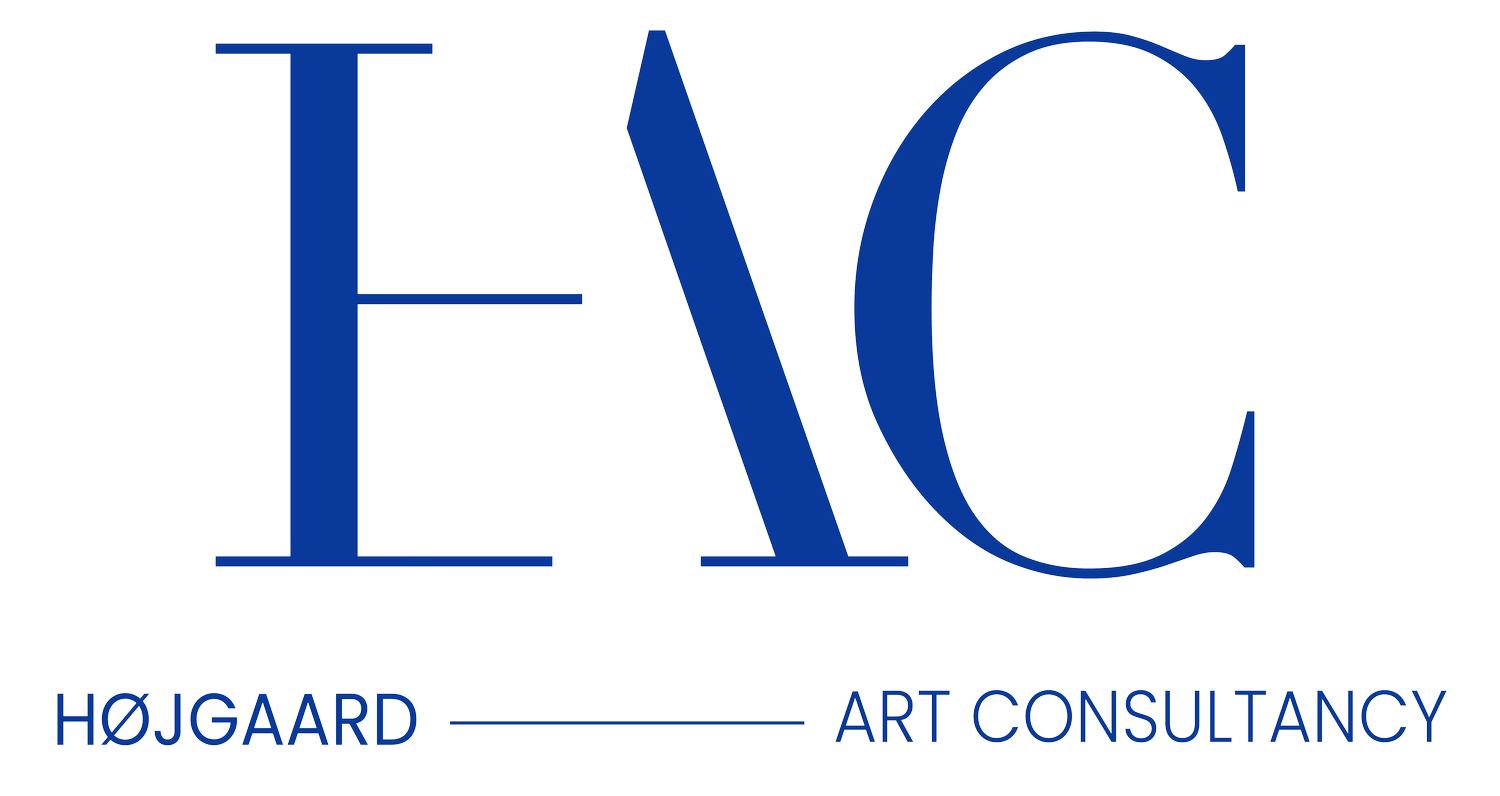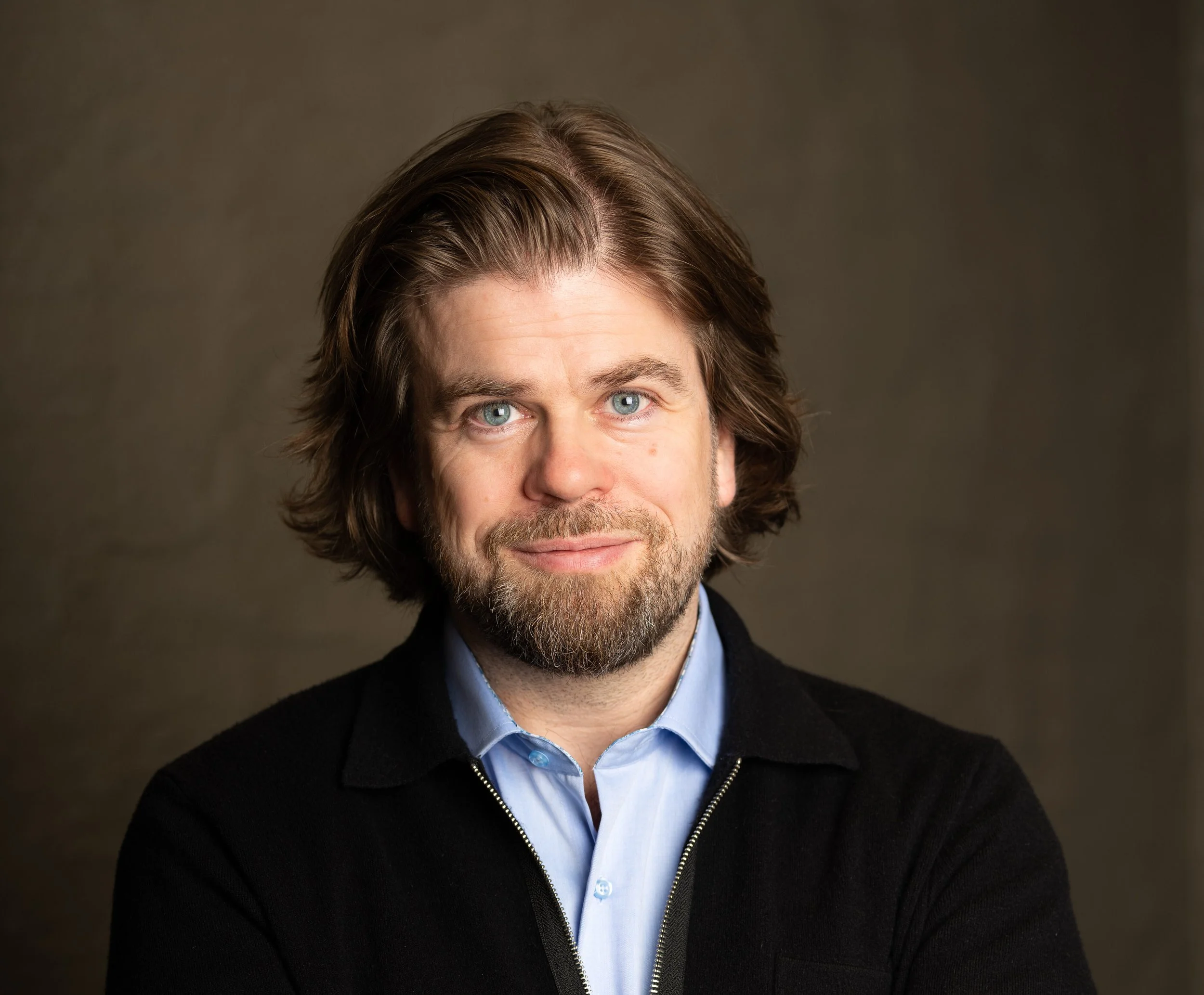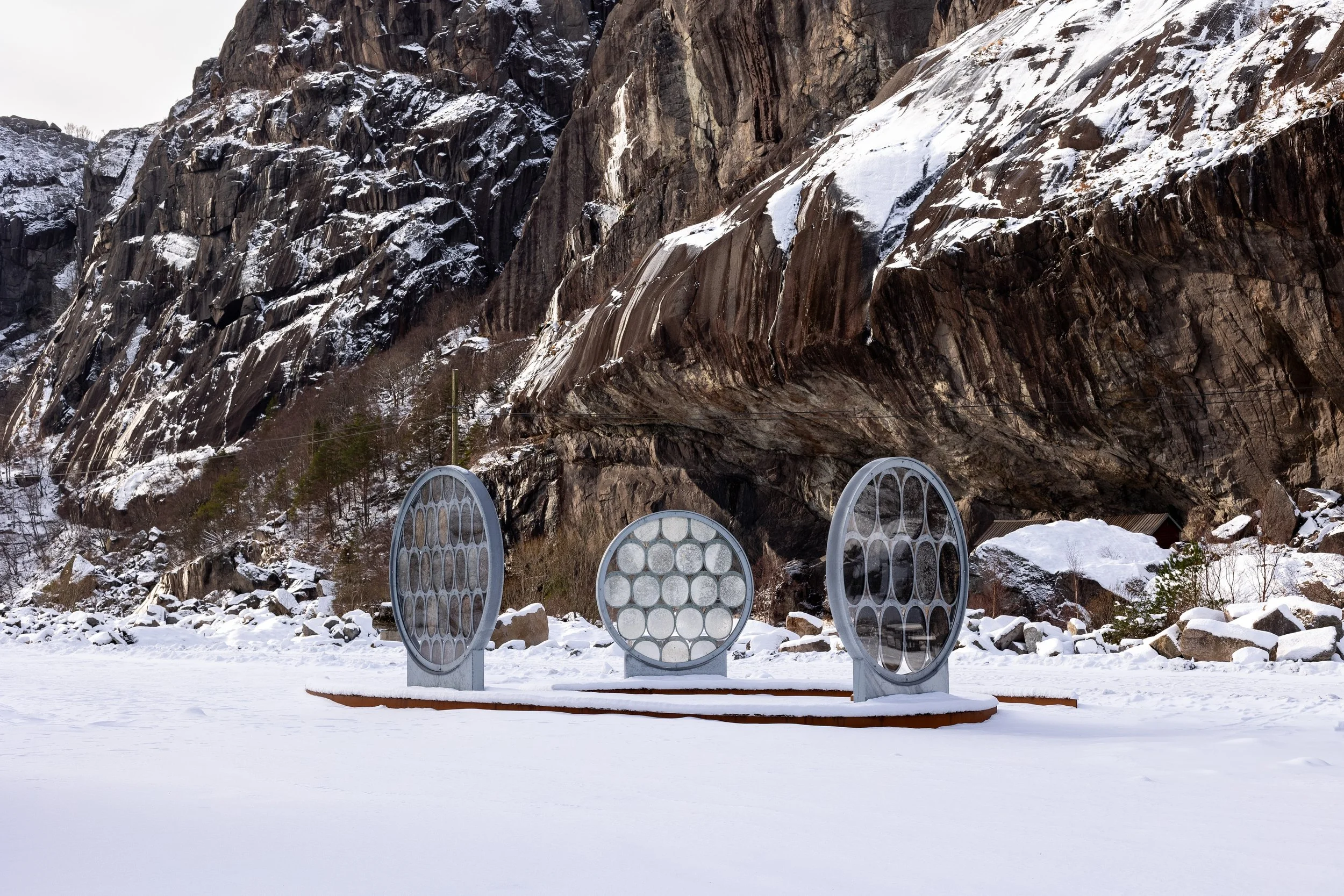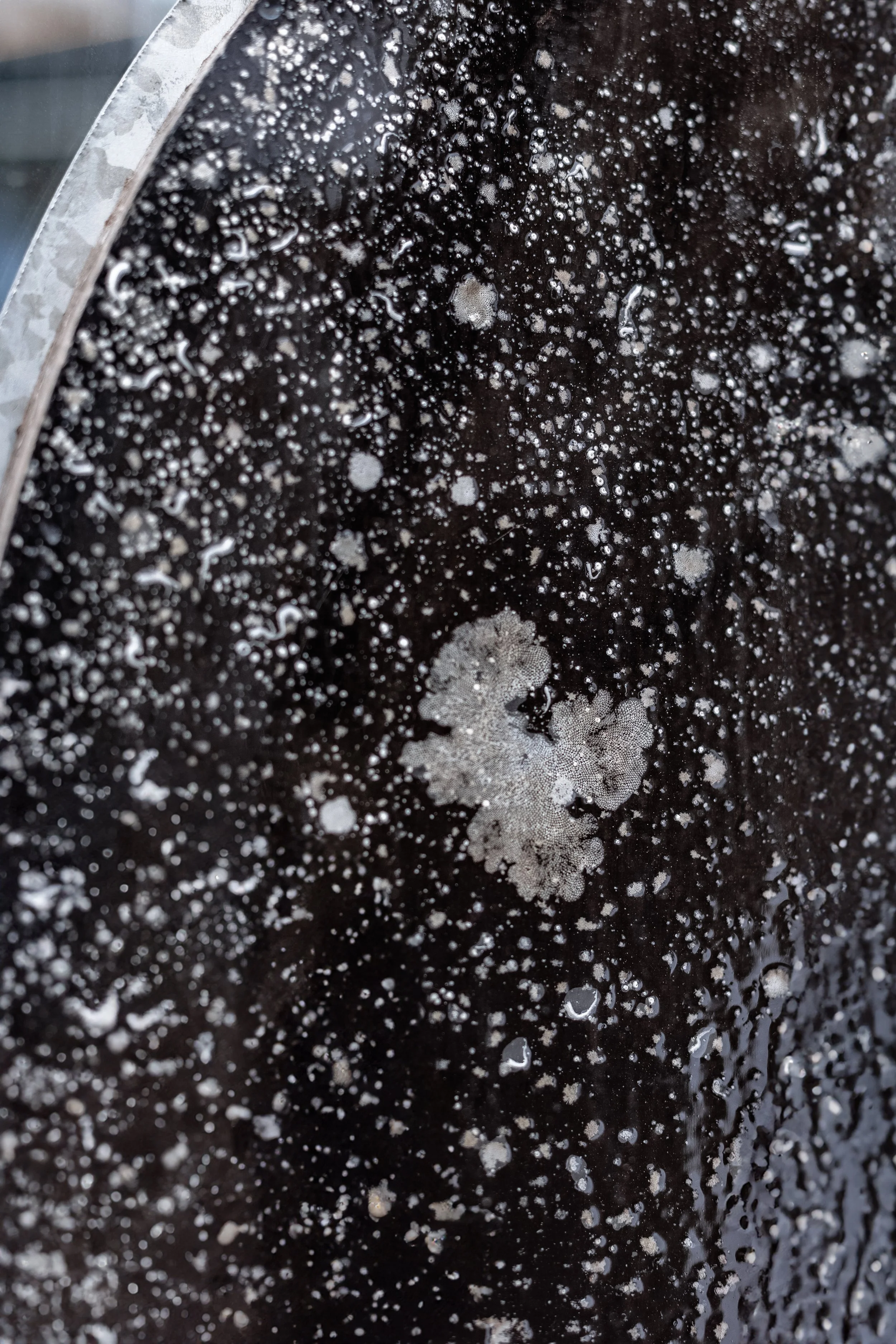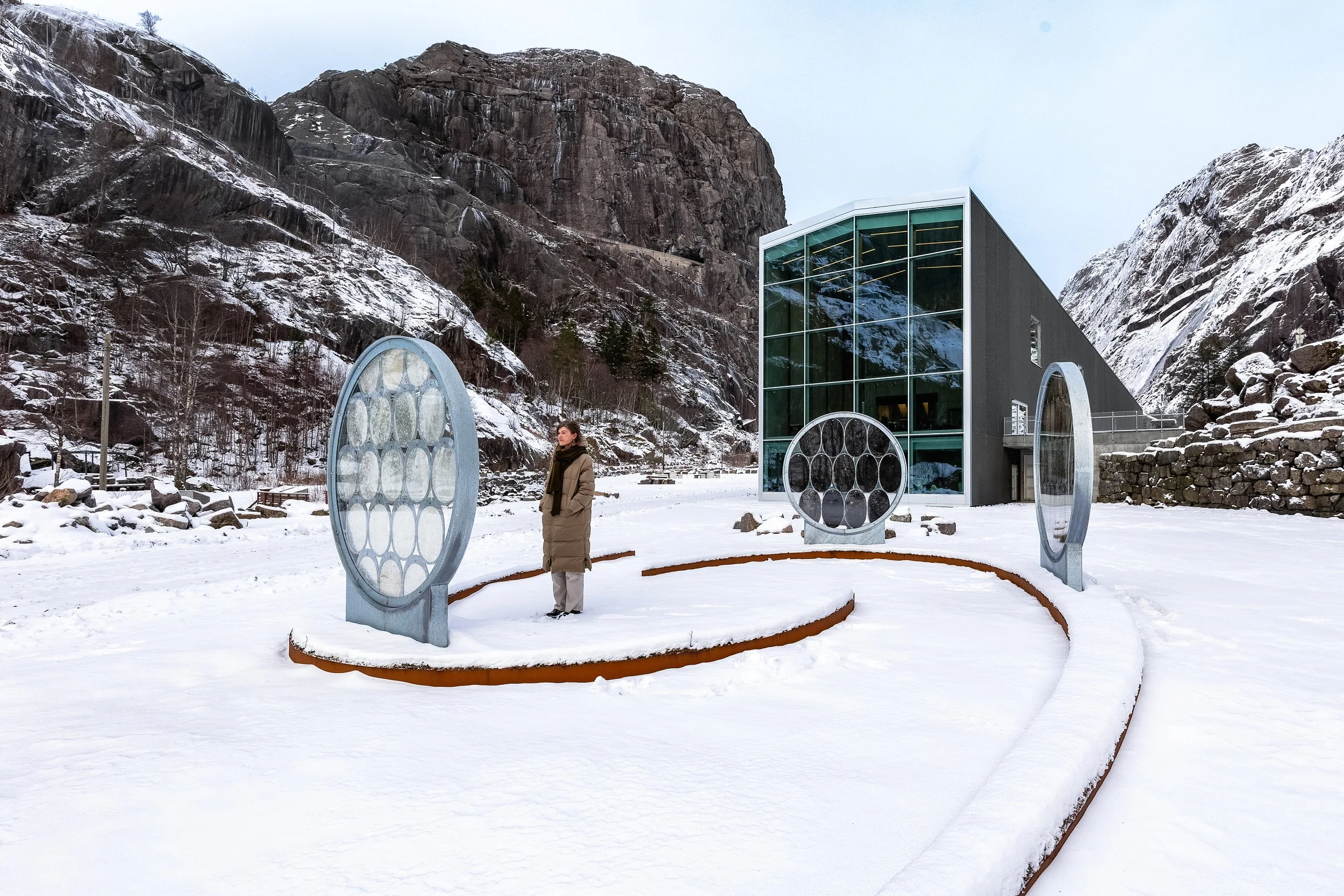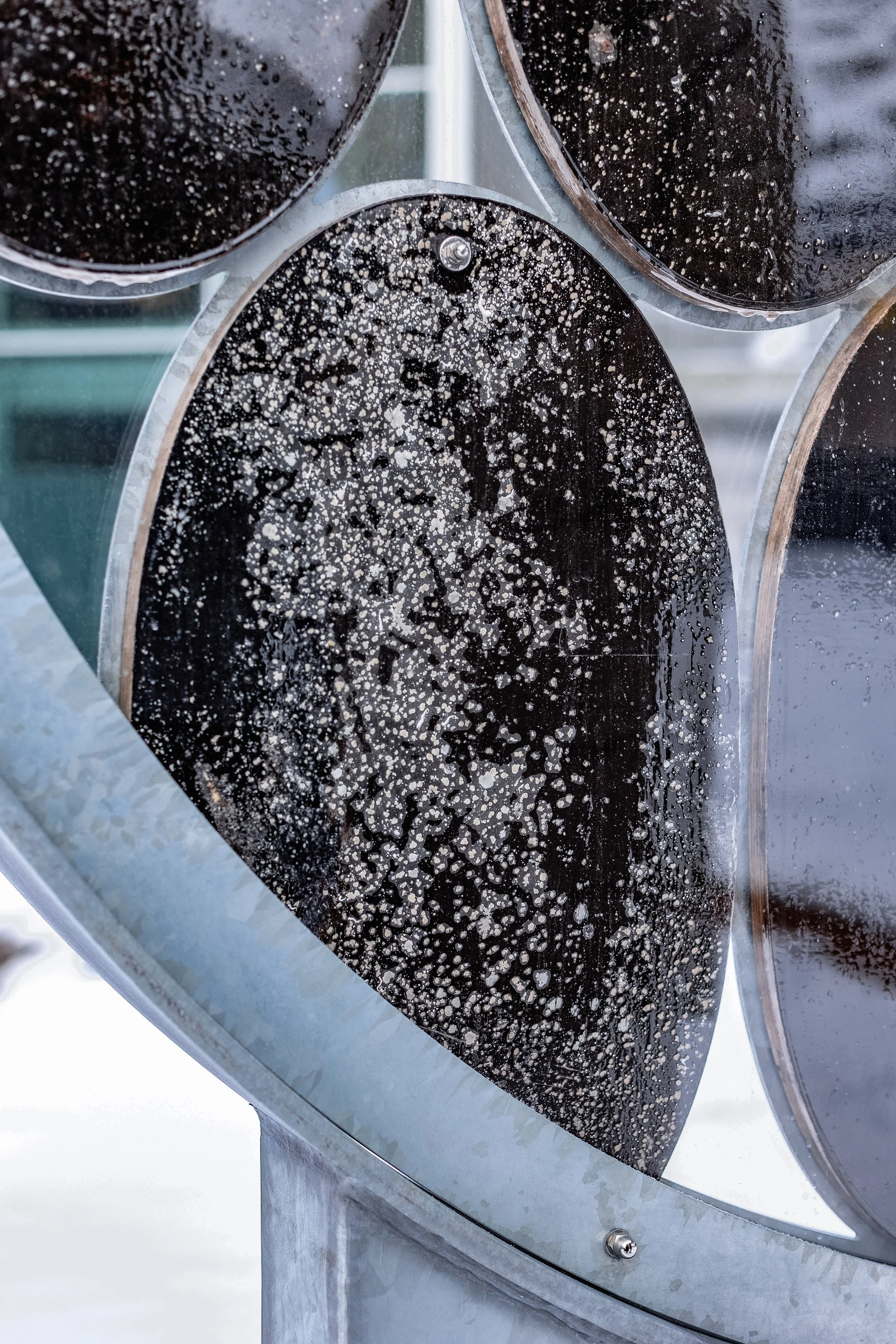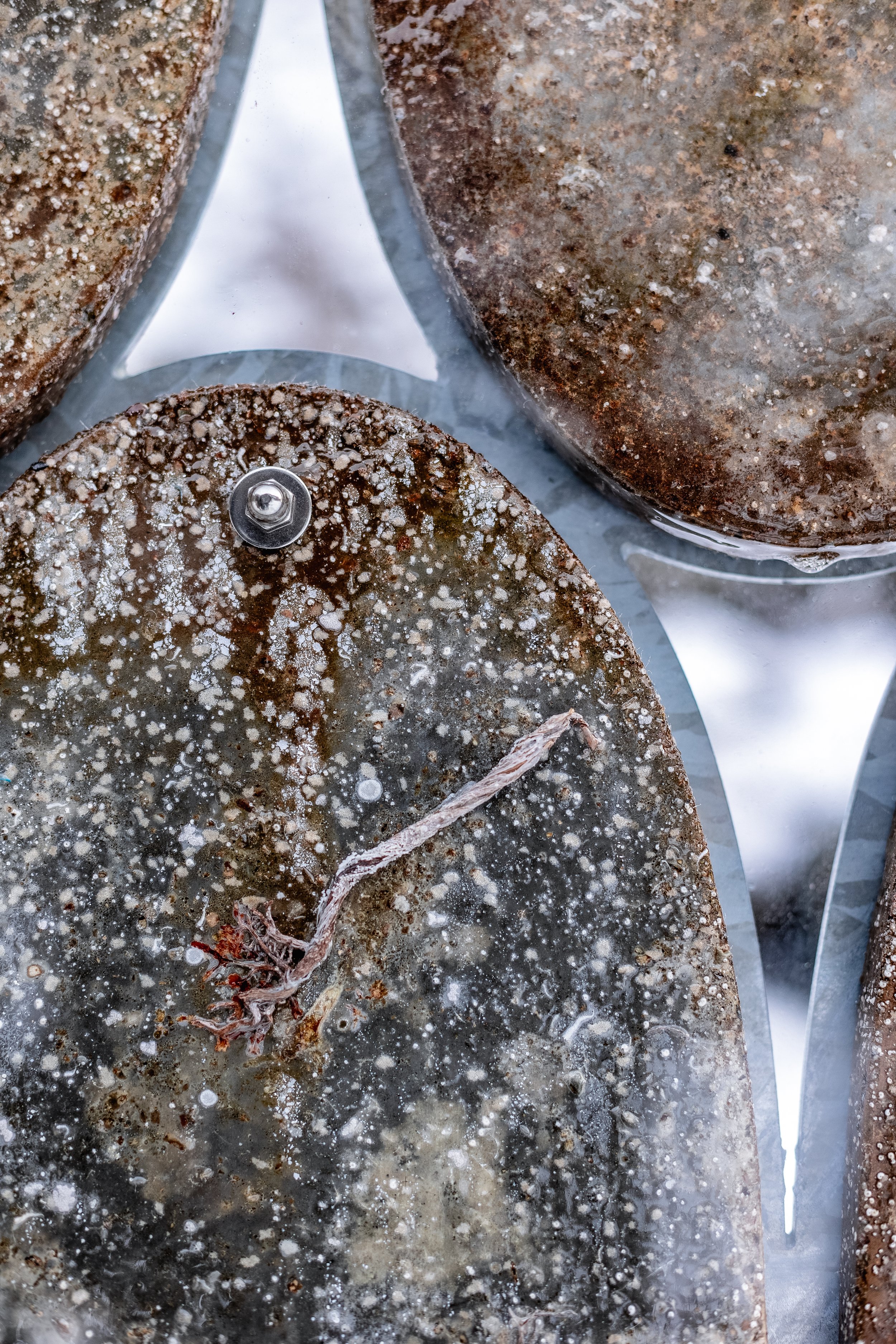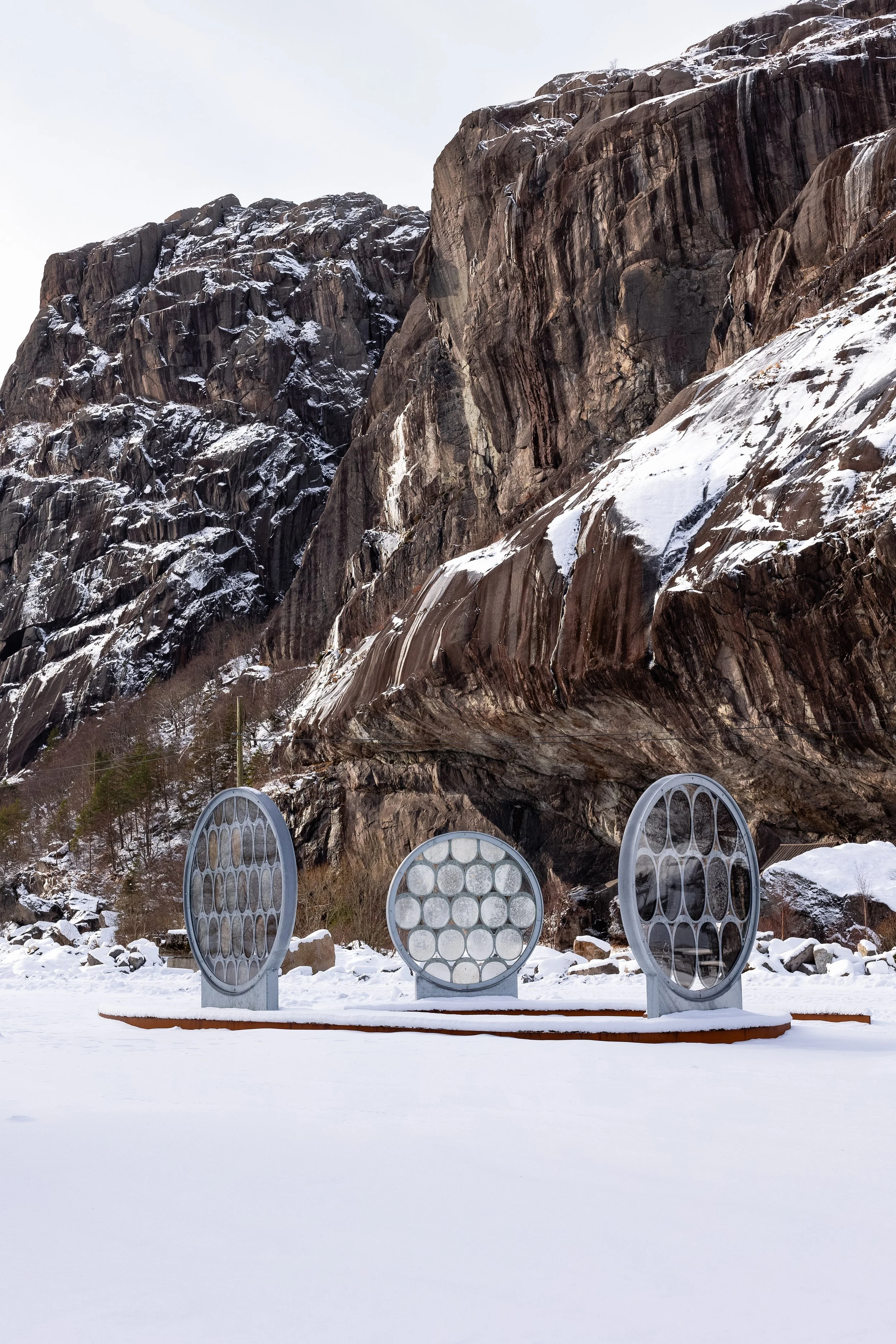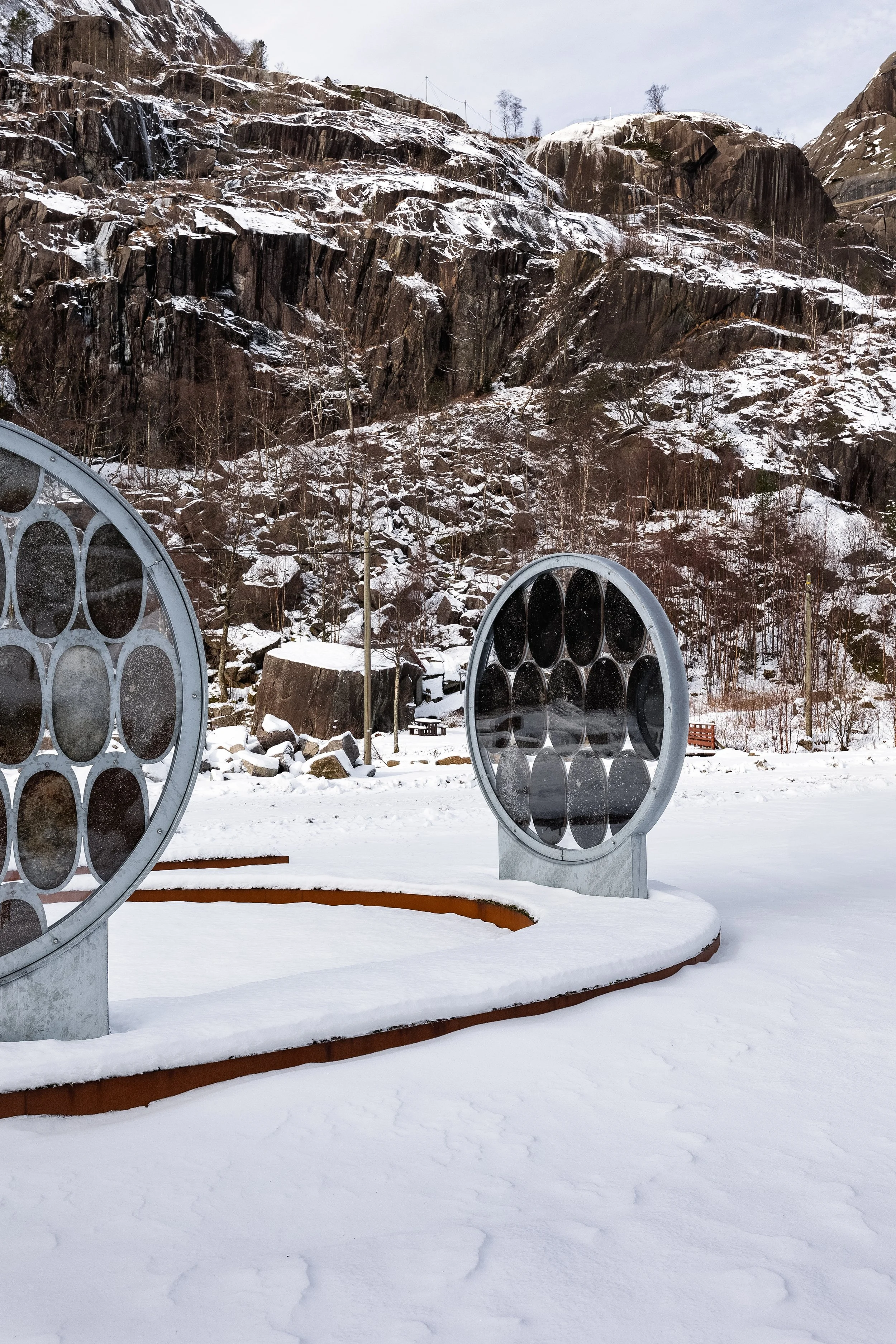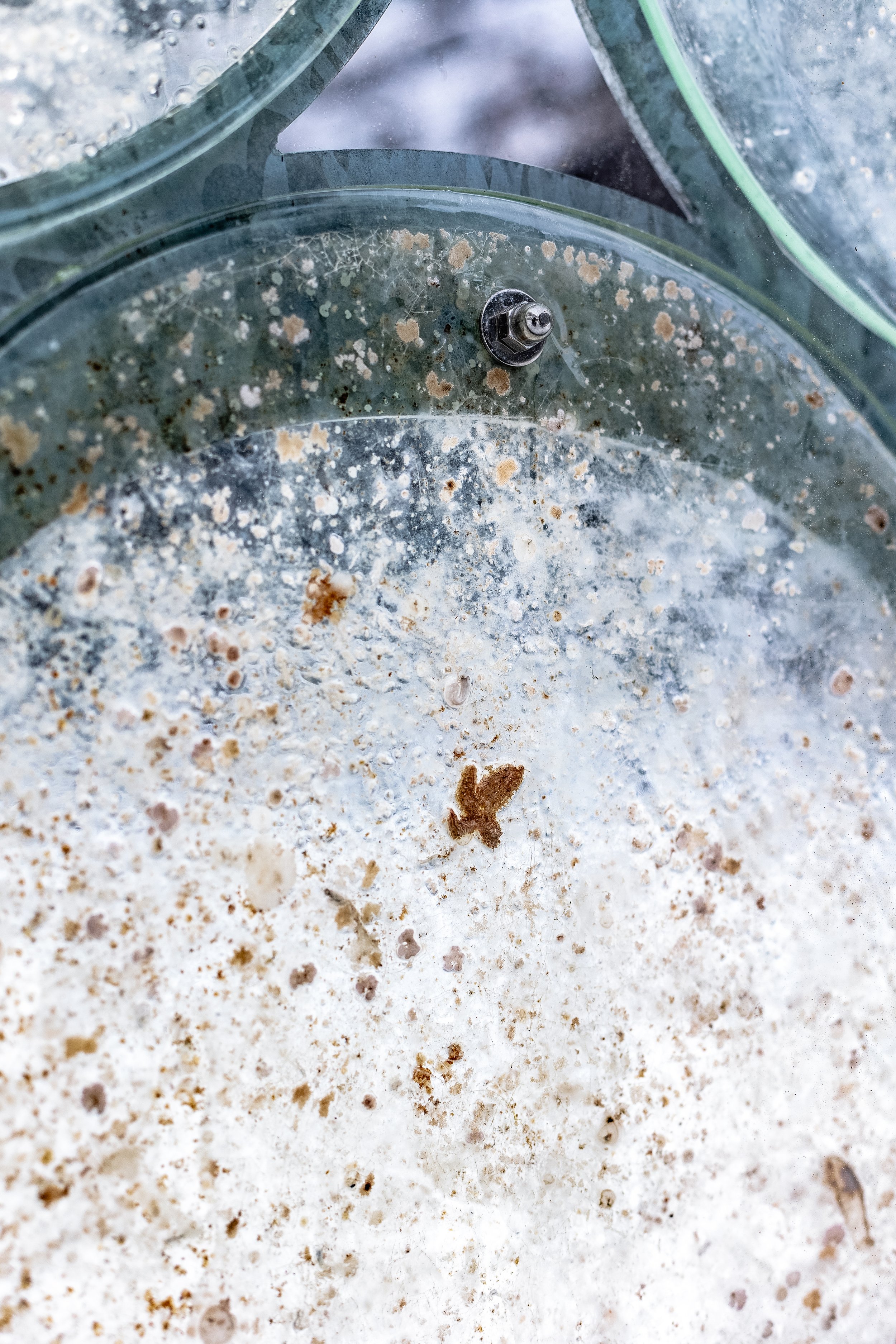
Off the coast from Eigersund and Sokndal municipality, there is an amphidromic point – a place in which there is virtually no difference between high and low tide. This has always affected life here, both above and below sea level. Amphibiome is a site-specific art project by Studio ThinkingHand (AU/DK) that invites you to explore this phenomenon and marks the lowest tidal movements on Earth. The first part of the artwork was installed close to the coastline in front of the Jøssingfjord Science Museum on Norway’s west coast in 2024. The second part will follow at Egersund port in 2025.
Amphibiome - Permanent Public Art Work
Year: 2024
Client: Eigersund Næring og Havn KF, Eigersund Kommune, Jøssingfjord Vitenmuseum
Location: Egersund port and Jøssingfjord, Norway
Artists: Studio ThinkingHand
Type: Strategy, funding, project management and curation
Production and installation: Cecilie Esper, Architect MAA
Diving and research: Erling Svensen
Metalwork: Smededesign
Photos and video: I DO ART Agency
The art project is an equal collaboration between art, science and the unique conditions of the site itself. It is part of the Art Programme THE TIDE IS CHANGING, a five-year curatorial programme organised by HAC. Both the art programme and the artwork are part of an extensive local development plan using art to bridge the municipalities’ unique geology, recognised by UNESCO, and a vision of a sustainable future.
Collaborating with local divers and marine researchers to investigate how maritime habitats are affected by tidal currents, geology and human intervention. They have strategically immersed five sculptural discs in glass, cement and laminated wood around the amphidromic point. After lying on the seabed for several seasons, the five disks have been covered by maritime biomass and become habitats for new life. In this way, Studio ThinkingHand has invited nature to co-create the artwork and facilitated a co-creation process with great unpredictability without trying to control the outcome. This has made room for nature's own chaotic images, which show stories about the cycles of life and the interaction between man, industry and nature. It also enabled groundbreaking research on regional biodiversity and the industry's environmental impact.
The five disks are now placed as permanent installations along the coast: the first three in Jøssingfjord in 2024, and two by the harbour in Egersund in 2025. With this project, the artists seek to raise awareness about the interplay of humans and the sea. The project challenges us to think about how our industry and daily actions affect the region's unique biodiversity, our role in preserving it for future generations, and recognize nature's ability to create life and meaning beyond the human-made.
I DO ART Agency recently made a video of the project, which can be found below.
The project is supported by KORO Public Art Norway, Nordic Culture Fund, Rogaland Fylkeskommune, Sokndal Municipality, Jøssingfjord Science Museum and Eigersund Municipality.
Studio ThinkingHand, Amphibiome
Video, 2024
This video is produced by I DO ART Agency
Underwater video and photos: Erling Svendsen
Footage from the workshop: Christian Ravn Brems
Macro photos of the marine growth: Studio ThinkingHand
Process photos from Norway: Cecilie Esper
Interviews with Studio ThinkingHand and Ida Højgaard Thjømøe: I DO ART Agency
Editing: I DO ART Agency
Sigurd Sverdrup Sandmo, Director, KORO Public Art Norway - from his speech at the inauguration event of the art project (translated from Norwegian):
